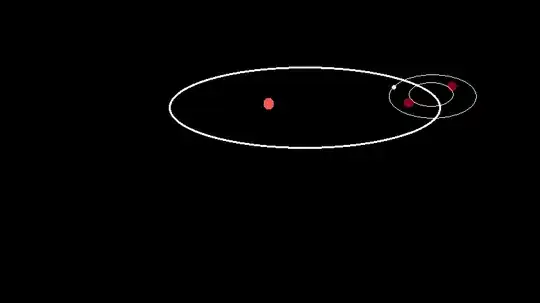I'm trying to make a trinary star system but I'm not sure how it would work. The primary star is an M0Ve star (red dwarf flare star). The orbits of the other two stars are slightly more complicated. Both other stars (T0 and Y9e) orbit around each other,and a planet orbits around the same barycenter, outside of the brown dwarfs (T0 and Y9e).
M0Ve:
- Mass: .47 solar (9.4*10^29 kg)
- Radius: .60 solar (420000 km)
- Luminosity: .041 solar
- Temperature: 3335 K
T0:
- Mass: .051 solar (1.0*10^29 kg)
- Radius: .111 solar (77000 km)
- Luminosity: .00010 solar
- Temperature: 1722 K
Y9e:
- Mass: .0135 solar (2.7*10^28 kg)
- Radius: .109 solar (76000 km)
- Luminosity: .00000005 solar
- Temperature: 260 K
Planet:
- Mass: .79 terrestrial (4.7*10^24 kg)
- Radius: .94 terrestrial (5989 km)
- Albedo: .42
- Insolation: 1450 W/m^2
- Atmosphere: 565 millibars
- Temperature: 310 K
- Geography: Global desert near equator, P4S3 oceans near poles
- Sidereal Day: 34.75 hours
The barycenter of Y9e and T0 is about .41 AU (61300000 km) from M0e, while the planet is about .072 AU (10800000 km) from the barycenter of the brown dwarfs. The brown dwarfs are very close to being ripped apart by each other, 500000 km away from each other (Roche limit is 290000 km).
Is this system stable on the scale of hundreds of billions of years?